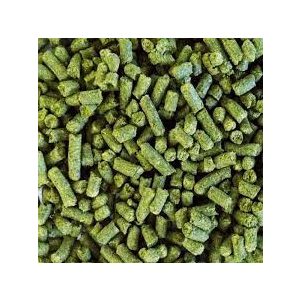
Pilgrim is a bittering hop; it has a full-bodied, refreshing and rounded bitterness. However, Pilgrim is also not too overpowering, so it’s a great hop to use if you want a very versatile yet robust flavour.
Pilgrim has a very hoppy aroma, with notes of lemon, berry, pear and hints of spice. Due to its high levels of Humulene, it can slightly overpower weaker hops. Pilgrim can be used as a bittering hop, but it can also be used as an aroma hop if you fancy an intense hoppy aroma for the finished product. The later you use Pilgrim in the kettle, the best chance you have of holding onto all those beautiful fruity aromas for the finished beer.
Pilgrim, like many English hops, was bred at Horticulture Research International, Wye College. Its newest variety, the ones we grow on the Brook House farm, was released in 2001. This new variety of Pilgrim was engineered to be highly tolerant to wilt and have high resistance to mildew. For a long while, Pilgrim was an awkward hop to grow and harvest, but thanks to this new variety, we now have a stable supply of Pilgrim.
As Pilgrim has a very rounded bitterness, many brewer’s choose hops to complement that. However, some brewers also use hops that slightly counteract Pilgrim’s bittering properties. Because of this, Pilgrim has been used to make a variety of beers including lagers, ales, stouts, Helles and more.
Many brewers consider Pilgrim an excellent base to start with. When crafting a new beer, beginning with a solid base is essential and Pilgrim is a hop that is strong, but not too strong. It can be used at the bittering or late stages, this meaning it’s very versatile. And a versatile base means that the beer can become anything the brewer wants it to be.
If you want to create a hoppy yet, deliciously fruity beer full of berry and lemony tones, you have to try Pilgrim. You have the control to make that beer as hoppy or light as you like with Pilgrim. This hop is a marvellous one that can create so many different styles of beer.
Reviews of the product
Be the first to review this product!